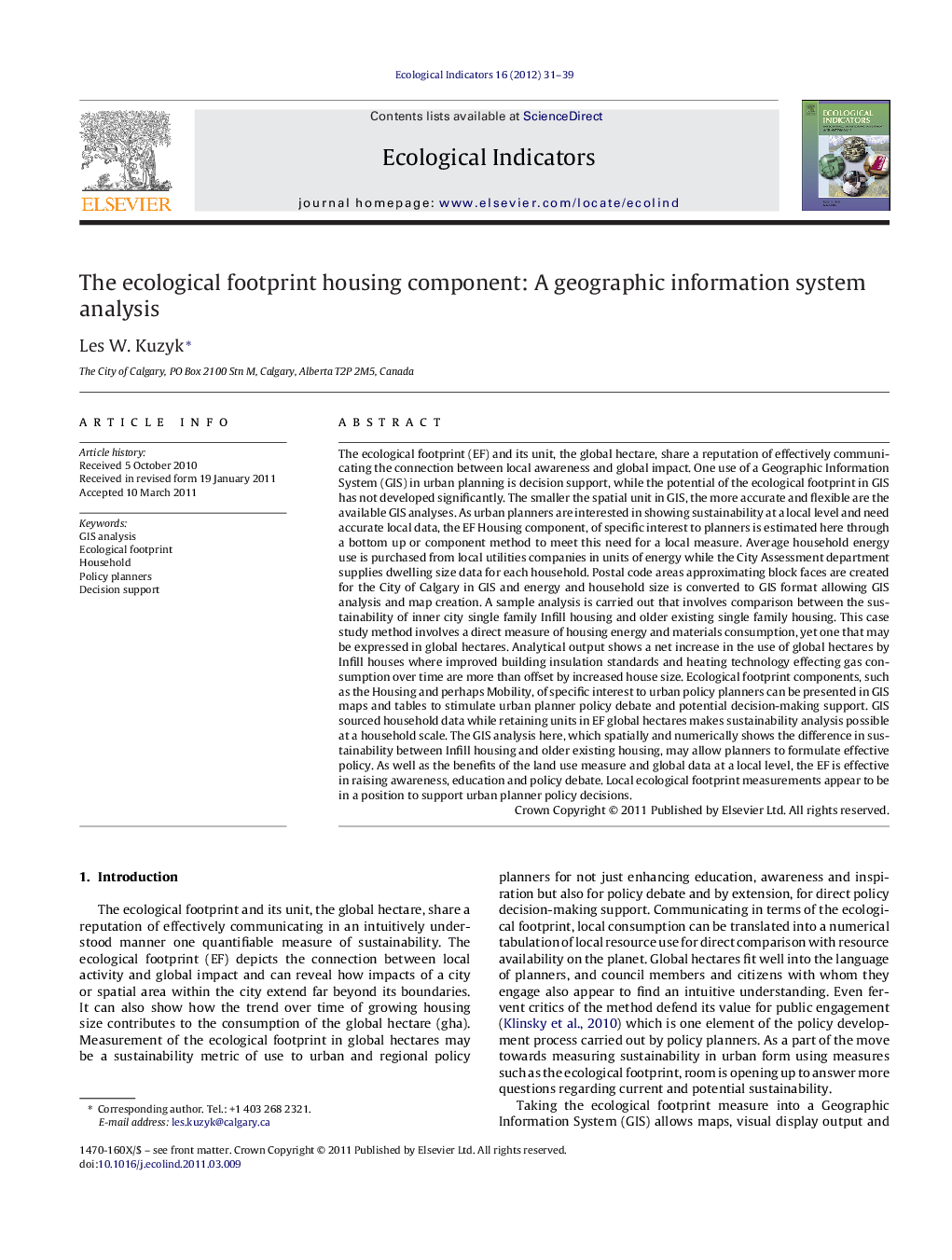| کد مقاله | کد نشریه | سال انتشار | مقاله انگلیسی | نسخه تمام متن |
|---|---|---|---|---|
| 4373947 | 1617184 | 2012 | 9 صفحه PDF | دانلود رایگان |

The ecological footprint (EF) and its unit, the global hectare, share a reputation of effectively communicating the connection between local awareness and global impact. One use of a Geographic Information System (GIS) in urban planning is decision support, while the potential of the ecological footprint in GIS has not developed significantly. The smaller the spatial unit in GIS, the more accurate and flexible are the available GIS analyses. As urban planners are interested in showing sustainability at a local level and need accurate local data, the EF Housing component, of specific interest to planners is estimated here through a bottom up or component method to meet this need for a local measure. Average household energy use is purchased from local utilities companies in units of energy while the City Assessment department supplies dwelling size data for each household. Postal code areas approximating block faces are created for the City of Calgary in GIS and energy and household size is converted to GIS format allowing GIS analysis and map creation. A sample analysis is carried out that involves comparison between the sustainability of inner city single family Infill housing and older existing single family housing. This case study method involves a direct measure of housing energy and materials consumption, yet one that may be expressed in global hectares. Analytical output shows a net increase in the use of global hectares by Infill houses where improved building insulation standards and heating technology effecting gas consumption over time are more than offset by increased house size. Ecological footprint components, such as the Housing and perhaps Mobility, of specific interest to urban policy planners can be presented in GIS maps and tables to stimulate urban planner policy debate and potential decision-making support. GIS sourced household data while retaining units in EF global hectares makes sustainability analysis possible at a household scale. The GIS analysis here, which spatially and numerically shows the difference in sustainability between Infill housing and older existing housing, may allow planners to formulate effective policy. As well as the benefits of the land use measure and global data at a local level, the EF is effective in raising awareness, education and policy debate. Local ecological footprint measurements appear to be in a position to support urban planner policy decisions.
Journal: Ecological Indicators - Volume 16, May 2012, Pages 31–39